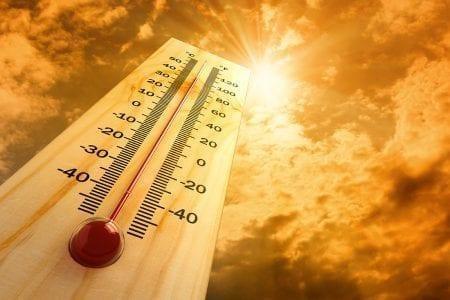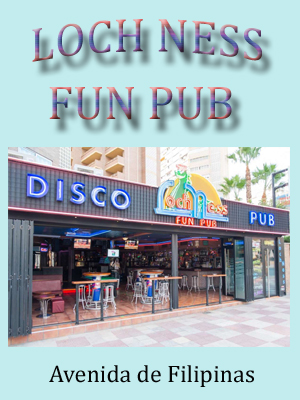Keep cool during the Spanish Summer Months
Keep cool during Spanish Summer - Keeping cool when temperatures reach record highs isn't just about comfort. Dangerously high temperatures can result in heat-related illnesses ranging from heat cramps to heat exhaustion and heat stroke. The following tips can help you keep cool all summer long.
Stay out of the sun while it's at its hottest. This common sense approach isn't always easy to adhere to when summer fun beckons, so it bears repeating. Avoid activities in the noonday sun as much as possible. It's best to limit your sun exposure between the hours of 10 a.m. and 4 p.m. each day during warmer months. When you are outside during these times, limit your exposure as best as you possibly can.
Schedule activities early in the morning or later in the afternoon
Some people are particularly vulnerable to heat and should stay in cool places during hot weather, such as children, the elderly, obese, redheads, gingers, and those who have health problems.
Allow yourself time to acclimatize if traveling. Travelers often make the mistake of trying to maintain normal levels of activity when arriving in a country warmer than the one they've left. Acclimatization can take up to 10 days depending on the temperature difference.
Rather than pushing yourself, give yourself time to acclimatize to the new warmer environment, which means minimizing physical activity until the heat feels more tolerable.
Once you feel more comfortable in the heat, gradually build up your physical activities until you're back to your normal level.
Stay in the shade. Retreat to shade as much as possible. Taking breaks under trees works doubly well because trees release water into the air that absorbs some of the heat. While shade doesn’t lower the actual temperature, the lack of sunlight exposure makes it feel like the temperature is up to 15 degrees cooler.
If a cool breeze comes by, that can feel like an additional lowering of 5 degrees in the shade.
Stay hydrated. Water is essential for keeping you cool during hot weather. Water keeps your body cool and should be drunk even if you don't feel thirsty. It's okay to also drink commercial waters (such as Vitamin Water) or sports drinks such as Aquarius but they're usually not necessary unless you're deliberately replenishing lost vitamins/electrolytes following a sporting activity.
The best way to check your hydration level is to measure your urination colour. Anything darker than straw coloured is probably an indication that dehydration is on the horizon, and water is needed.
Stay away from sugary drinks such as sodas (even if they are sugar-free!); they decrease the ability of your body to store water. Also, steer clear of alcoholic drinks (sorry), coffee, and caffeinated drinks, which are natural diuretics
Keep plastic bottles of water in the freezer; grab one when you're ready to go outside. As the ice melts, you'll have a supply of cold water with you.
Keep cool during Spanish Summer
Don’t wait until you’re thirsty to drink. Drink plenty of water before engaging in any activities. If you wait too late, you could experience cramps, which are a sign of heat-related illness. Remind yourself to drink water frequently with one of the following options.
Purchase a durable water bottle or water pack that you can tote everywhere and refill at any safe water tap.
Freeze a bottle of water to carry around with you. It'll be solid when you leave the house, but the heat will start melting it from the moment you take it out of the freezer. Wrap it in a towel to prevent water condensation affecting other items in your bag.
Download a water drinking app onto your phone. Set reminders, daily targets, and even track when the last time you had a drink.
Close curtains and blinds. The sun’s rays convert to heat. However possible, you should block the rays coming into your house to keep the temperature down. Closing curtains, lowering shades, or even blocking windows can significantly reduce the heat in your house and keep it cool. Awnings work as well, because they keep the direct heat off the windows without blocking out all light
Wear lighter clothing. Lightweight, loose-fitting clothing will help to keep you cooler. If it is light in color, it’s even better, as this will reflect the heat and sunlight better. Shorts and short sleeved shirts are good choices. Something that lets the air flow freely through, hitting the sweat on your body, works best. The following suggestions are specific ways clothing can maximize your ability to stay cool:
Cotton and linen clothing tends to keep you cool and absorb moisture.
Clothes you can hold up to the light and see through are great choices. Be sure to apply sunscreen when wearing really thin clothing, however, as the clothing doesn't provide adequate protection from the sun's harmful rays.
Synthetic clothing tends to trap moisture, which makes the fabric feel heavier, stick to your skin, and restrict air-flow.
Working in lower humidity settings with short sleeves has been shown to have a minor benefit. Weigh the options of UV exposure with your choice of clothing
Splash water on your skin. When it’s hot and sunny outside, a dip in cool water is refreshing. Jumping into a pool is not always a choice. Don’t forget low-maintenance options like sprinklers. You could also try taking showers or baths with cooler than normal water to take the edge off.
Fill a spray bottle with pure water and place in the refrigerator at home or work. When you feel too hot, spray a fine mist of the cooled water over face and body to help cool you down quickly. Refill as needed and keep refrigerated.
Make a game of staying cool. Gather friends and run through sprinklers. Throw water balloons. Have a squirt gun battle.
Use fans. While the efficacy of fans during extreme heat and humidity has been debated, some research suggests fans are beneficial up to 97 °F (36 °C) with 80% humidity, and 108 °F (42 °C) with nearly 50% humidity. Whether hand-held or electric, fans can keep you cool by continuously circulating air. In your home and office space, locate fans in rooms where you are working or resting to keep the air circulating freely and to reduce the mugginess of heat.
Make a DIY air conditioner by positioning a shallow pan or bowl (a roasting pan works nicely) full of ice in front of a fan. The breeze will pick up cold water from the ice’s surface as it melts, creating a cooling mist.
A fan should not be the primary source of cooling down in extremely hot weather. Fans work well, but only if the weather is not too hot.
Wear breathable footwear. Depending on the activity, one shoe could be more comfortable or appropriate than another. Consider whether arch support, durability, and comfort are mandatory, and then choose the best breathable footwear for the activity.
Cotton socks are great.
Some running shoes are designed with the summer months in mind, providing ventilation in a variety of designs.
Be careful if you decide to go barefoot. Many artificial pavements become unbearably hot during warm weather and can scald your feet
Try storing lotions or cosmetic toners in the refrigerator to use on hot, overtired feet.

Keep cool during Spanish Summer
Choose function over style. Wear fewer accessories during hotter weather. Metallic accessories can heat up considerably and less is always best when it comes to keeping cool. Other clothing accessories can weigh clothing down, trapping in heat and moisture. If you have long hair, wear it up and off your face and body, allowing the breeze to flow along your neckline
Keep your head covered. Wear a wide-brimmed hat, one that sufficiently covers the top of your scalp as well as the tops of your ears. This helps to keep you cooler by providing shade. Choose a brim that is wide enough that it can also cover the back of your neck.
Light-coloured hats can help keep you cool.
if you're wearing a cap or hat, remove it and pour a bit of ice cold water into the hat, then quickly invert it and place on your head.
Choose cooling foods. Food can keep you cool provided you make the right choices. Choose salads, fresh raw food, vegetables and fruit. “Cool as a cucumber” is literal; it is nearly 100% water, providing hydration to keep you cool. Avoid eating meat and protein-heavy foods during the heat of the day because these can increase metabolic heat production, which can add to loss of water.
It may seem counter-intuitive, but eating spicy peppers may help cool you off. They make you sweat, which provides a cooling sensation.
Smaller meals may also help keep your core temperature down. Large meals require the body to work harder breaking everything down
Using Air conditioning - The best temperature to have your unit set at is around 72° F 22ºC.
If you don't have air-conditioning, arrange to spend at least parts of the day in a shopping mall, public library, movie theater, or other public space that is cool. Many cities have cooling centers that are open to the public on sweltering days.
Cool down a whole room by hanging a wet sheet in front of an open window. The breeze blowing in will quickly bring down the room’s temperature.
Finally, use common sense. If the heat is intolerable, stay indoors when you can and avoid activities in direct sunlight or on hot asphalt surfaces. Pay special attention to the elderly, infants, and anyone with a chronic illness, as they may dehydrate easily and be more susceptible to heat-related illnesses. Don't forget that pets also need protection from dehydration and heat-related illnesses too.
ALSO READ OUR PAGE ON KEEPING SAFE IN THE SUN




